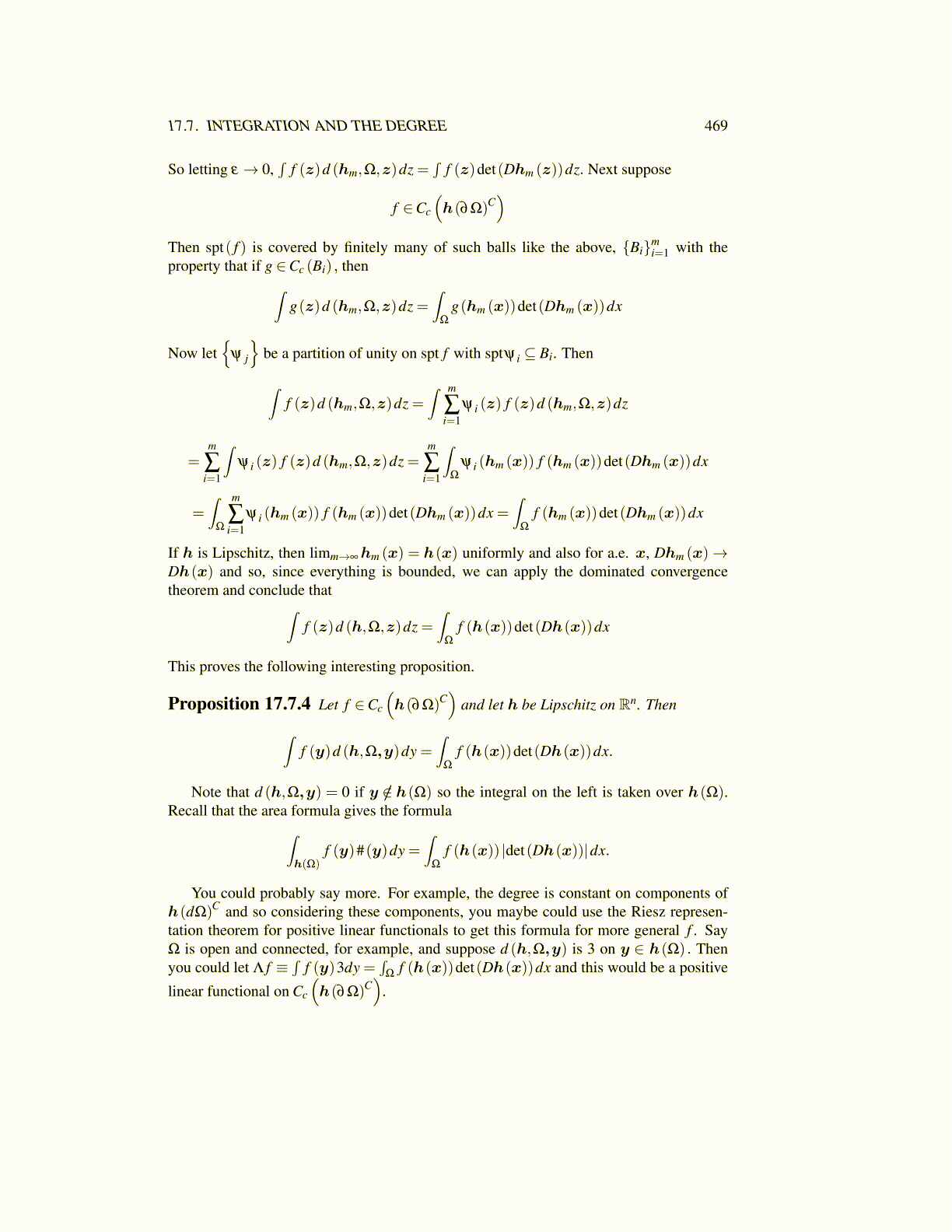
17.7. INTEGRATION AND THE DEGREE 469
So letting ε → 0,∫
f (z)d (hm,Ω,z)dz =∫
f (z)det(Dhm (z))dz. Next suppose
f ∈Cc
(h(∂Ω)C
)Then spt( f ) is covered by finitely many of such balls like the above, {Bi}m
i=1 with theproperty that if g ∈Cc (Bi) , then∫
g(z)d (hm,Ω,z)dz =∫
Ω
g(hm (x))det(Dhm (x))dx
Now let{
ψ j
}be a partition of unity on spt f with sptψ i ⊆ Bi. Then
∫f (z)d (hm,Ω,z)dz =
∫ m
∑i=1
ψ i (z) f (z)d (hm,Ω,z)dz
=m
∑i=1
∫ψ i (z) f (z)d (hm,Ω,z)dz =
m
∑i=1
∫Ω
ψ i (hm (x)) f (hm (x))det(Dhm (x))dx
=∫
Ω
m
∑i=1
ψ i (hm (x)) f (hm (x))det(Dhm (x))dx =∫
Ω
f (hm (x))det(Dhm (x))dx
If h is Lipschitz, then limm→∞hm (x) = h(x) uniformly and also for a.e. x, Dhm (x)→Dh(x) and so, since everything is bounded, we can apply the dominated convergencetheorem and conclude that∫
f (z)d (h,Ω,z)dz =∫
Ω
f (h(x))det(Dh(x))dx
This proves the following interesting proposition.
Proposition 17.7.4 Let f ∈Cc
(h(∂Ω)C
)and let h be Lipschitz on Rn. Then
∫f (y)d (h,Ω,y)dy =
∫Ω
f (h(x))det(Dh(x))dx.
Note that d (h,Ω,y) = 0 if y /∈ h(Ω) so the integral on the left is taken over h(Ω).Recall that the area formula gives the formula∫
h(Ω)f (y)#(y)dy =
∫Ω
f (h(x)) |det(Dh(x))|dx.
You could probably say more. For example, the degree is constant on components ofh(dΩ)C and so considering these components, you maybe could use the Riesz represen-tation theorem for positive linear functionals to get this formula for more general f . SayΩ is open and connected, for example, and suppose d (h,Ω,y) is 3 on y ∈ h(Ω) . Thenyou could let Λ f ≡
∫f (y)3dy =
∫Ω
f (h(x))det(Dh(x))dx and this would be a positive
linear functional on Cc
(h(∂Ω)C
).